Reviewed by Grant McCreary on September 10th, 2008.
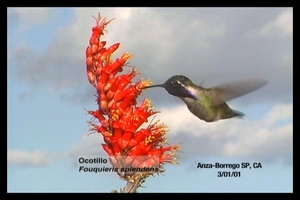 I recently got an unsolicited mailer from the National Audubon Society. Being a member, this was not very surprising, as they normally send out address stickers, greeting cards, and the like, seeking further donations. But this was different – it was a DVD. Called Hummingbirds: Marvels of Mother Nature, it was the first entry in the Connecting People with Nature video series. Apparently, this is a new venture for Audubon, and they sent out the first disc to some (all?) members unsolicited. Confused, I read the fine print. I could return the disc in a prepaid return envelope with no further obligation. Or I could choose to keep the disc, send them $12.95, and get further installments with the same keep or return policy.
I recently got an unsolicited mailer from the National Audubon Society. Being a member, this was not very surprising, as they normally send out address stickers, greeting cards, and the like, seeking further donations. But this was different – it was a DVD. Called Hummingbirds: Marvels of Mother Nature, it was the first entry in the Connecting People with Nature video series. Apparently, this is a new venture for Audubon, and they sent out the first disc to some (all?) members unsolicited. Confused, I read the fine print. I could return the disc in a prepaid return envelope with no further obligation. Or I could choose to keep the disc, send them $12.95, and get further installments with the same keep or return policy.
Well, that’s not really a choice. I wasn’t happy about having to return an unsolicited disc, and honestly, I wasn’t expecting much from it. I figured it was probably a 30 minute generic documentary like you would find on the Discovery Channel or Animal Planet (no offense to those channels, I do enjoy some of their programming). I was going to return it, but I figured what the heck; I might as well watch it. I’m glad I did.
Right from the start, I had reasons to doubt my preconceptions. The video starts with the narrator introducing himself as Jon Dunn. Dunn is a well known birding guru, and one of the lead editors for National Geographic’s bird books. Ok, I thought, maybe there’s something to this after all. When I finished it an hour and a half later, I was convinced. Instead of the fluff piece I was expecting, what I found was a detailed, advanced guide to the field identification of North American hummingbirds! (Actually, I think this has been previously released under a different name, as I will explain shortly).
I should qualify that, in actuality it only covers less than 40% of the North American hummers – 9 species, separated into two groups:
Rufous-Green Group: Rufous; Allen’s; Broad-tailed; Calliope; Bumblebee
Gray-Green Group: Ruby-throated; Black-chinned; Anna’s; Costa’s
Each species is covered in depth, in addition to some introductory and summary material.
Species Accounts
Each account averages 8-9 minutes in duration, with the exception of the Bumblebee Hummingbird, which is covered in two minutes. The Bumblebee is known in this region from only two old specimens of dubious origination. But it is rightly included here for completeness’ sake, because it could turn up one day.
Some other video guides, such as the Audubon VideoGuides, are surprisingly lacking in actual video footage. Not so here. Just about every possible variation (sex, age, etc) of each species is shown in multiple video sequences. The sequences show birds from various angles, both in flight and perched. The video quality is great; the birds are close, clear, and in focus.
However, this program does use graphics, diagrams, and still images to great effect where appropriate. These are most often used to show details of wings and tails, and to compare species. This guide does a very nice job of the latter, splitting the screen to show multiple species, or superimposing one video segment on top of another. Another great use of graphics is the unobtrusive labeling of plant species and time and place the video was recorded. It would have been even better if they had used such labels to indicate what species was being shown during the footage in the introduction, since they usually aren’t mentioned in the narration.
Each of the species accounts (except for the shortened Bumblebee) includes the following:
- Size – length (inches and millimeters); average weight; bill length; tail length
- Range Map – breeding and winter ranges; shows normal migration path; shows some places it has appeared as a vagrant
- Display Dive – uses computer graphics to trace a typical display
- Sounds – plays and describes the songs and calls, and shows then as sonagrams
- Structure – size and shape, especially focusing on the wings and tail
- Plumage – broken down by sex and age
- Similar Species – directly compares similar species, and gives ways to separate them
- Hybridization – lists all species it is known to hybridize with
As you can see, each account is packed with information, ably narrated by Dunn. Some of it, especially diagrams and other graphics, can go by pretty quickly. But that’s the beauty of DVD, you can just hit pause and take all the time you need.
Introduction and Summaries
In the eleven minute introduction, Dunn walks us through the basics of hummingbird identification, including general things to look for, topography, and identification pitfalls. Each of the two groups also gets their own intro, and after the species accounts, a summary. These are helpful in previewing, and then reviewing, the most important features and differences of species within the group.
I was very impressed with this video, and the credits helped explain why. It was written by John W. Vanderpoel, who I don’t know, and Sheri Williamson, who I do know as one of the foremost hummingbird experts and author of the Peterson Hummingbird field guide. However, something was nagging me. I knew that Jon Dunn has hosted some other advanced birding videos, possibly including one on hummingbirds. Was this video sent out by Audubon related to them? After looking into it, I believe that it is more than related.
I found that Dunn has, indeed, hosted the video Hummingbirds of North America, a part of Peregrine Productions’ Advanced Birding series. Moreover, this company was started by John Vanderpoel, the aforementioned author that I was not familiar with (see the comment below for more information). However, the video from Peregrine covers 24 hummingbird species, and runs for 3 hours, much more than this one from Audubon. But when I re-watched the introduction on this DVD, I noticed that Dunn states that this guide would cover “all 24 species found north of Mexico”. Thus, I believe that this DVD is the first half (in terms of length) of the Hummingbird guide from the Advanced Birding series.
Recommendation
There are many weird things about this offer, including the unsolicited delivery and the partial reuse of a previous production. Also, I would think that a general documentary on the hummingbird family would have more general appeal than this minutiae-filled guide targeted at more serious birders. As such a guide, though, it excels. If you need help identifying these flying jewels (and don’t we all?), then this video is highly recommended. I found the content and presentation extremely helpful.
This is also a relatively good deal. The price is fair for what you get, and it’s a very good deal compared to the full version, which sells for $40. And even though it covers a minority of species, it does include the ones that are the most difficult to ID.
Offer Details
I haven’t found any information on this offer online, so here are some more details. By sending back the reply card, and a payment of $12.95:
You’ll be entitled to receive new DVDs from the Connecting People with Nature DVD collection every 2-3 months at the regular price, plus shipping and handling, as they are produced. You decide if you want to keep each DVD or return it. There are no minimum purchase requirements and you are free to cancel at any time. No questions asked!
This is the worst thing about this DVD. I’m not a fan of clubs such as these, especially when I don’t know what I’ll be getting next. This particular release is worth it, but I’m going to try to get more details before replying (such as, what is the “regular price”?).
But if you’d like to get in on this deal, you can try calling 1-877-359-9297, or emailing audubon@cust-serv.net
Disclosure: I get a small commission for purchases made through links in this post.

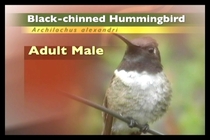
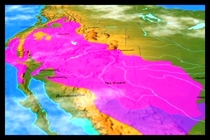
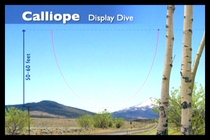
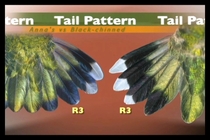
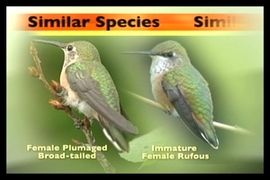
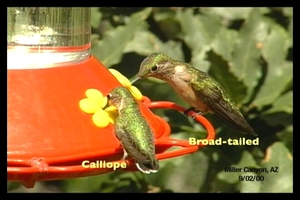

Hi, Grant,
Thanks for the flattering review of half (?) of one of my projects. I’m as mystified as you are by the appearance of this disc in your mailbox! The Advanced Birding Video hasn’t been as enthusiastically received as John Vanderpoel and I had hoped, but maybe this Audubon promotion and your review will win it some new viewers. Just so your readers know, there’s more scrumptious eye candy on the second disc (Broad-billed, White-eared, Magnificent, Green Violetear, Cuban Emerald, etc.) as well as what we hope is equally good information on plumages, voice, behavior, migration, etc.
John V. not only co-wrote the script with me but was also the principal videographer, animator, and graphic designer. Also, I’m the sole author of the Peterson Field Guide to Hummingbirds of North America, though obviously all field guide authors are standing on RTP’s gigantic shoulders.
Sheri,
Thanks for the comment! I still need to contact whoever is handling this promotion, as I still have many questions. One I’d love to know is if the second half of your project will be included, as I’d love to have it too.
My apologies about the “coauthor” thing on your Peterson guide. I was relying on my memory instead of double-checking to be sure. I have corrected it.
I called the company offering this deal and got some more information. Please see this post for further details.
I moved about 3 months ago and didn’t change my address with this magazine. I did not know about this DVD on hummingbirds. I did not recieve it. I will not pay for it since I did not order it. I am sure it is a very wonderful video but at tihs time I am not going to subscribe to a DVD collection. I have enjoyed your magazine.
Thanks for your understanding in this matter, Betsy K Turner